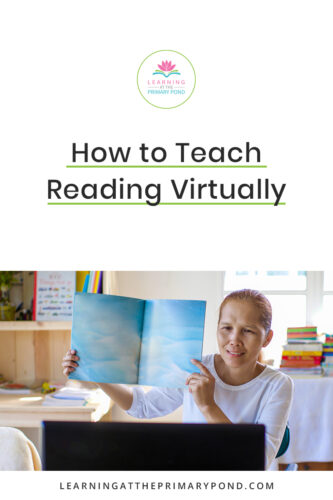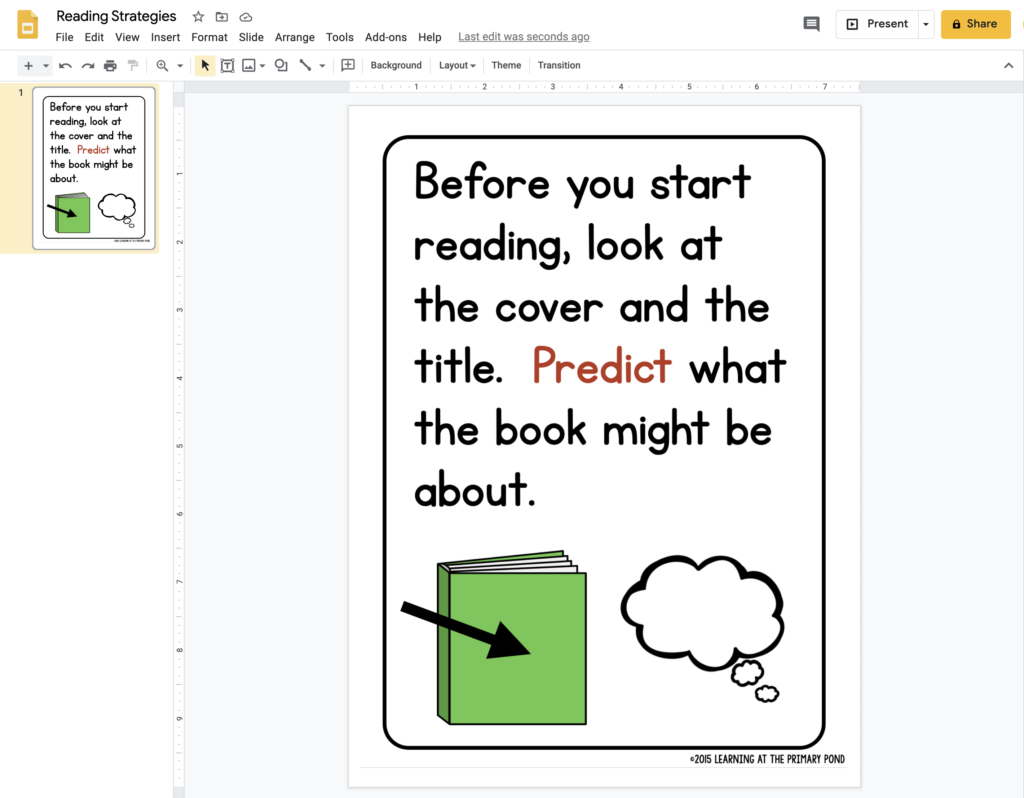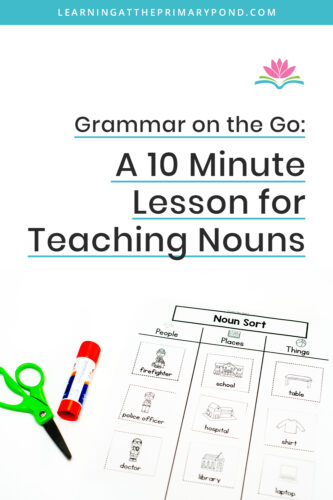Before the pandemic, I’d heard of online schools. I had no idea how they worked.
And then I had to figure that out for myself! ?
2020 brought many of us into the online teaching space for the very first time.
And online instruction feels SO different from in-person instruction. There are lots of challenges and even inequities.
Still, it’s possible to teach reading in this setting! In this blog post, I’m sharing some tips for teaching reading online. These have worked well with my own students!

Tip #1: Come back to the gradual release of responsibility.
When you’re drowning in tech tools, it’s easy to lose sight of what really matters.
The gradual release of responsibility is one of those “things” that really matter!
We need to read to our students, have them read with us, and have them read by themselves. And we can make that happen even when teaching online.
Reading to Students:
- Read-alouds can easily be done during a live video call. Hold up the book like you normally would, or put it under a document camera if that’s easier for you. (That’s my Amazon affiliate link to the doc camera I use.)
- Consider recording many of your read-alouds. I love doing read-alouds live, but if I only have very limited instructional time, that’s one thing the kids can watch on their own. You can still pause to ask questions even if you’re making a recorded video! Have students answer your questions to a caregiver or a stuffed animal. ?
- Having students respond to a story or text by drawing or writing is a simple, engaging extension activity that can be completed as independent work. If you need reading response prompts and activities, check out my reading response packs: Kindergarten / 1st grade / 2nd grade
Reading with Students:
- Incorporate shared reading. Shared reading is a GAME-CHANGER!! In shared reading, you literally share the work of reading with the students. I model strategies – like how to decode words, read with attention to punctuation marks, use text features – and have the kids practice strategies with my help. I display the text under my document camera so that they can read part of or all of the text along with me. If you’re not familiar with shared reading or need a refresher, check out this blog post. Seriously, shared reading can make such a big difference when you’re teaching reading online.
- In my experience, it’s a lot easier to work with students in a small group setting. If possible, make time for reading small groups each day. You can read more about teaching small groups online in this blog post.
Having Students Read by Themselves:
- Make sure that parents understand the importance of independent reading practice. Provide access to digital texts via Epic, RAZ Kids, or my guided reading books. You can talk to your kids and their families about building reading stamina (starting with small chunks of independent reading time and gradually working their way up).
- If you’re concerned that your kids aren’t actually reading, try having a “silent reading party” online! Everyone checks into Zoom, the kids can hold up the book they’re reading, and then you mute everyone. All the kids read, right there, as if you were all together in class. Afterward, kids could share a bit about what they’ve read. You could even do something fun like a PJ reading party!
- If you can, consider having 1:1 virtual meetings with students for reading conferences. This can be time-consuming (don’t try to fit in all your kids every week!) but can really, really pay off.
The gradual release of responsibility is a valuable model to come back to, whether we’re teaching online or in-person. It works!
Tip #2: Accept that online teaching has limitations, and plan accordingly.
The internet goes out. Students don’t have a quiet place to work. The kids get distracted.
Online teaching definitely has its unique challenges! And the online setting can feel very limiting, especially if you’ve been teaching in-person for years.
Here are some tips to help:
- When you bump into a problem, take a deep breath. It’s normal to feel frustrated, but getting upset over things you can’t control (i.e. connectivity issues) doesn’t serve anyone.
- Remember that kids’ attention spans are short – and sometimes they’re even shorter during an online lesson! Plan for frequent opportunities for students to talk and physically get moving.
- If you have much more limited time than you do during a “normal” school day, accept that you’re not going to cover the same amount of material. Period. Go for quality over quantity, and adjust your pace based upon what students need.
- Keep in mind that your students are still learning, even if your instruction looks very different than it does during a “normal” school year!
Tip #3: Expect that kids (and even families!) will forget things, and give them tools to help.
It can be frustrating when you’ve taught something or explained something 3 times…and students (or their families!) still aren’t remembering it.
In a “regular” classroom setting, you might have anchor charts posted on the walls. Students can ask their peers for help. Families get “hard copies” of letters to refer back to.
But in an online setting, kids and families don’t typically have these same tools.
We can safely assume that people are always going to forget things. ? It happens to everyone!
Here are some tools you can give students and families to support your reading instruction:
- Recorded videos of you demonstrating skills like breaking up a word to read it, retelling, etc. (These are great for kids to re-watch as needed!)
- Digital anchor charts for students and families to refer back to (you can take visuals like the ones from my reading workshop toolkits, take screenshots, and paste them onto Google Slides or into Seesaw)
- A single “home base” where parents can find supporting resources (like the anchor charts, your recorded videos, etc.) all in one place

Conclusion
Teaching reading online will never be the same as teaching in-person.
But it can still be successful AND fun!
Here are some resources that can support you with your online instruction:
- Shared reading bundles for K-2 – these include ready-to-teach strategy lessons!
- Digital guided reading books – easily shareable in a Google Slides format
- Digital phonics games for K-2 – great for independent practice
Happy teaching!














Thanks for the tips! Could really use these as we are still doing online learning. Excited to try them out with my K-2 students.
Let me know how it goes, Dylan!